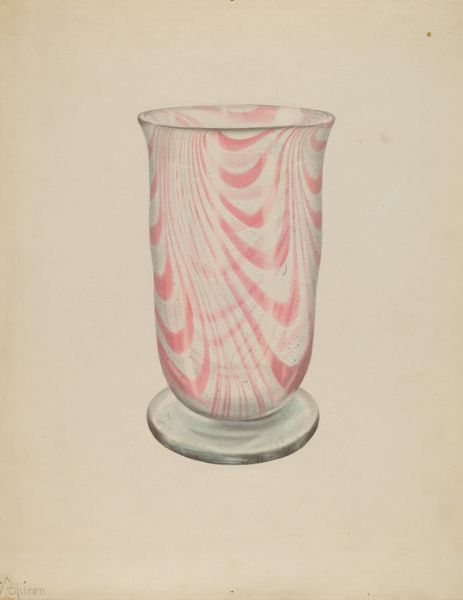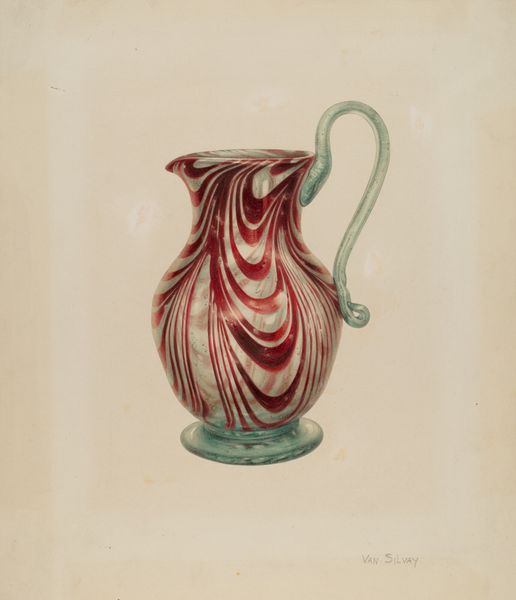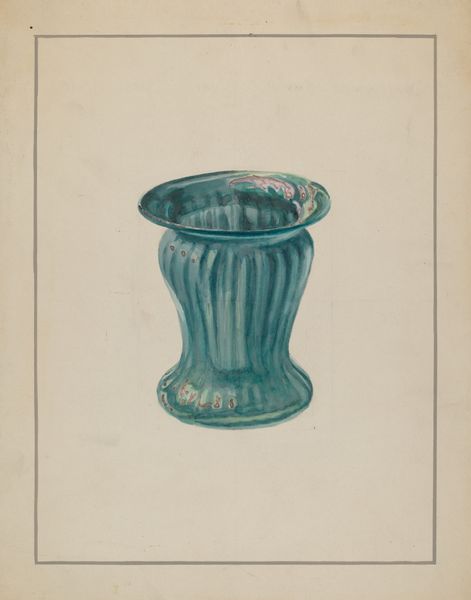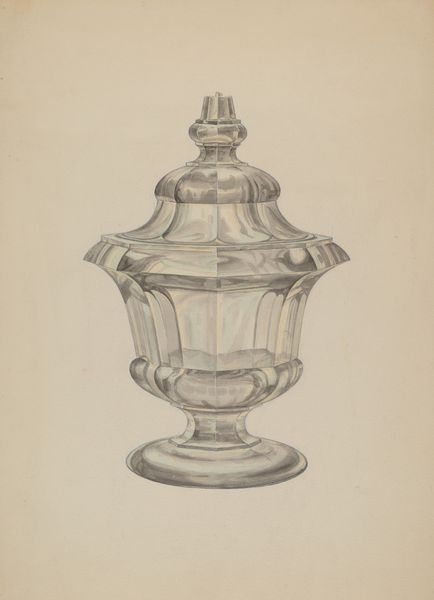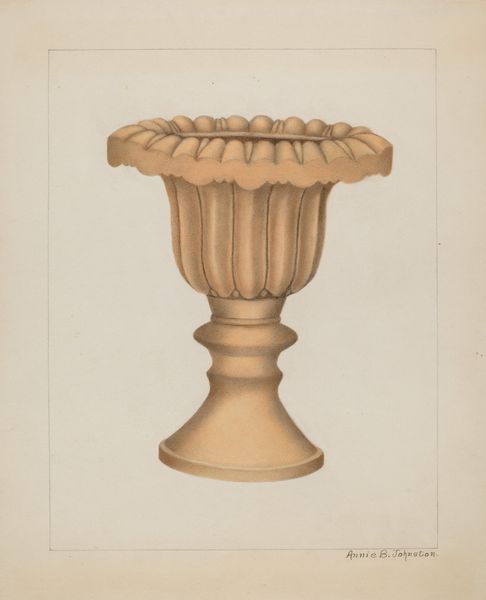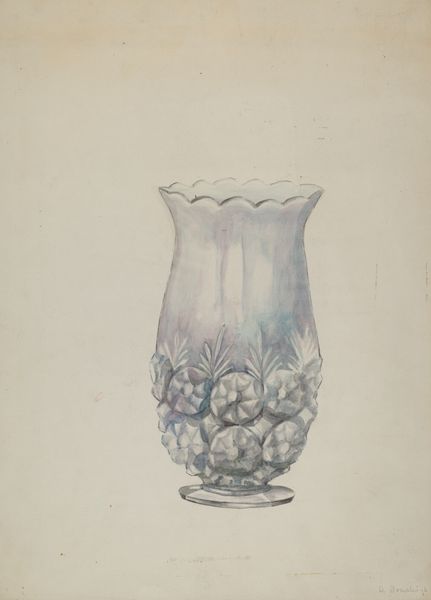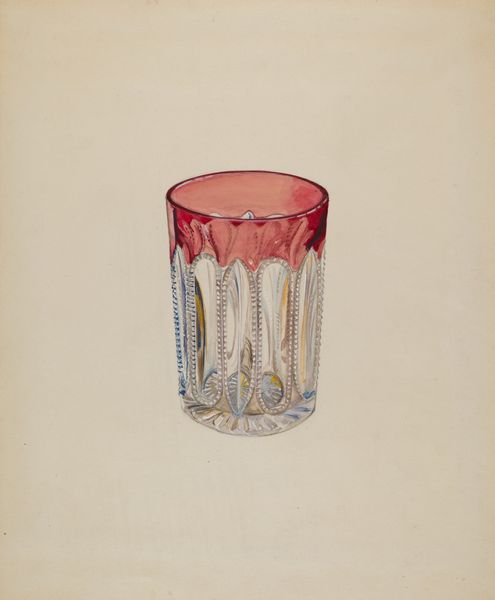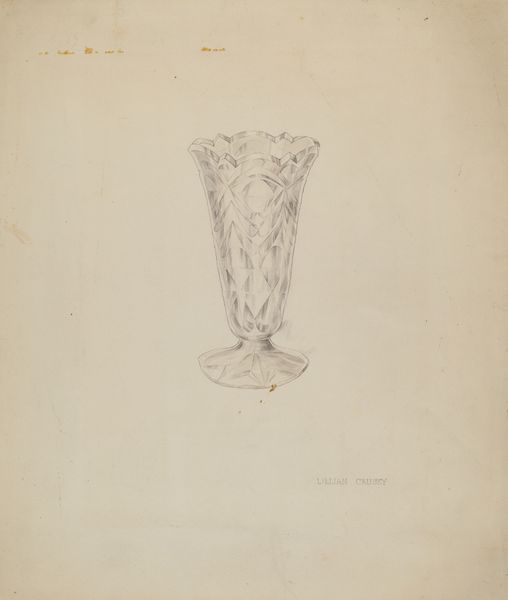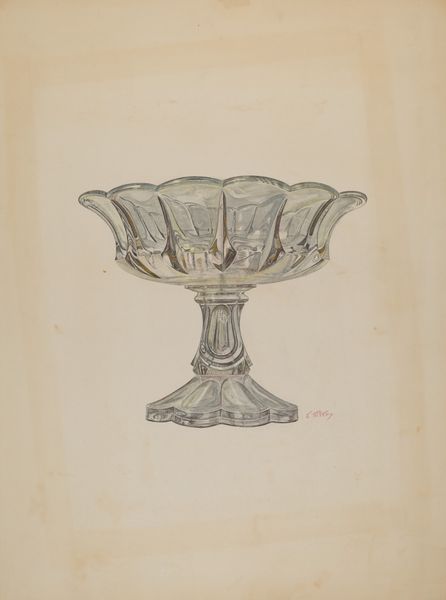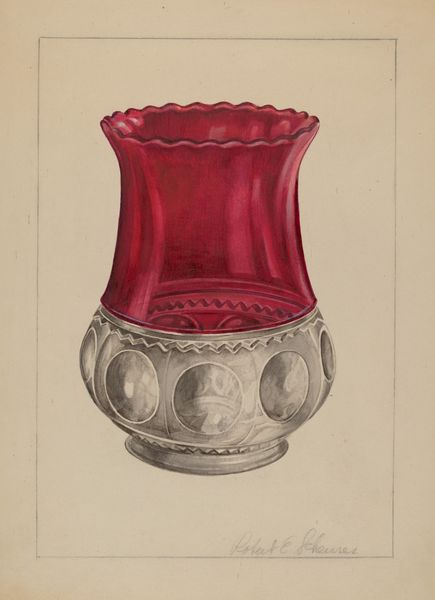
drawing, watercolor
#
drawing
#
charcoal drawing
#
watercolor
#
modernism
#
watercolor
Dimensions: overall: 28.7 x 22.7 cm (11 5/16 x 8 15/16 in.)
Copyright: National Gallery of Art: CC0 1.0
Editor: Here we have Van Silvay’s “Vase,” circa 1941, a charming work rendered in watercolor and what appears to be charcoal drawing. I'm really struck by how delicate the piece is, especially considering the swirling patterns within the glass itself. What are your thoughts on how the materiality of glass intersects with its artistic representation here? Curator: The choice of watercolor to depict glass is telling. Watercolor, like glass, relies on transparency and the subtle layering of tones. Think about the means of production for both: the delicate breath that shapes glass, and the equally delicate application of pigment onto paper. Consider also, during the 1940s, glass production may have become a mechanized industrial process that shifted the cultural understanding and economic value. Is Silvay pointing toward industrialization of common house-hold wares? Editor: That's fascinating, the connection between the artistic medium and the object it represents. I hadn’t considered the industrial aspect and whether Silvay is trying to grapple with or comment on it. What would have been the context of consuming such vase? Curator: This could represent a growing accessibility and consumption pattern during that time period. The rendering of a common household object, at a time when consumerism was on the rise. Is this simple act of illustrating an everyday object elevating or denigrating it? Perhaps, we should consider this artwork to be of socio-historical importance. Editor: So you're suggesting the artistic value comes, in part, from its connection to mass culture and emerging consumer habits. Curator: Precisely. Think about the labour involved, both in creating the vase and then recreating its likeness. It all speaks to the material conditions of artmaking and consumption. How labor practices impact everyday lives through the representation of commodities? Editor: I am finding that looking at art through the lens of materiality makes us focus less on aesthetics, and more on manufacturing and material reality. That definitely has given me a lot to think about. Curator: Exactly! I hope this offers new perspectives on how art, in its creation and consumption, is deeply embedded in a network of socio-economic and material exchanges.
Comments
No comments
Be the first to comment and join the conversation on the ultimate creative platform.
